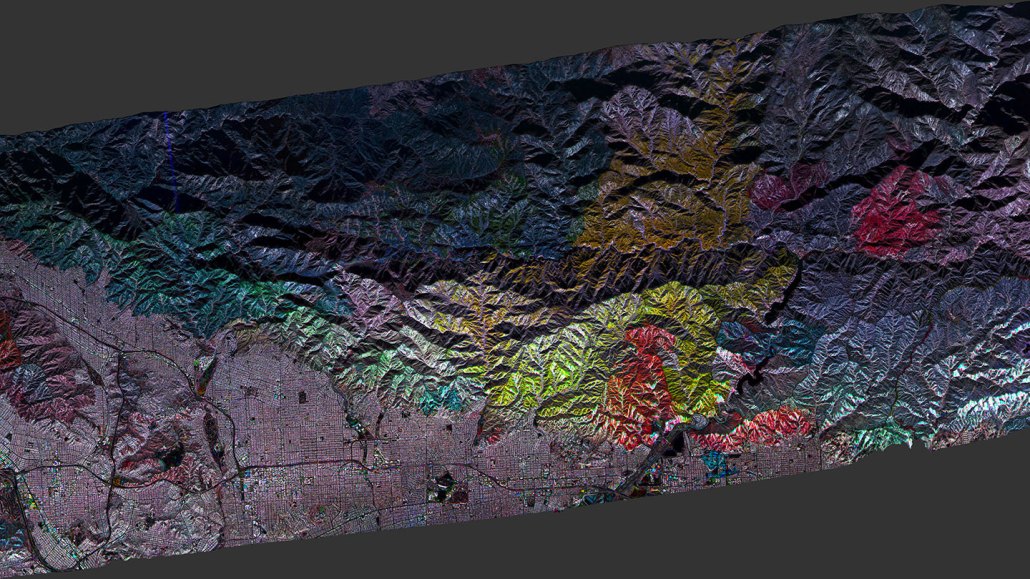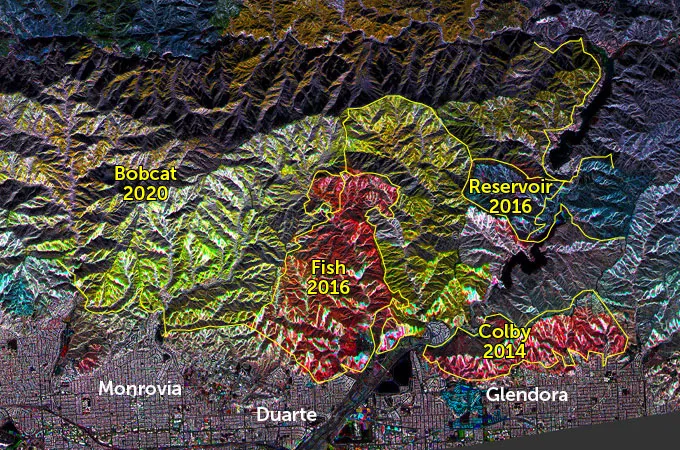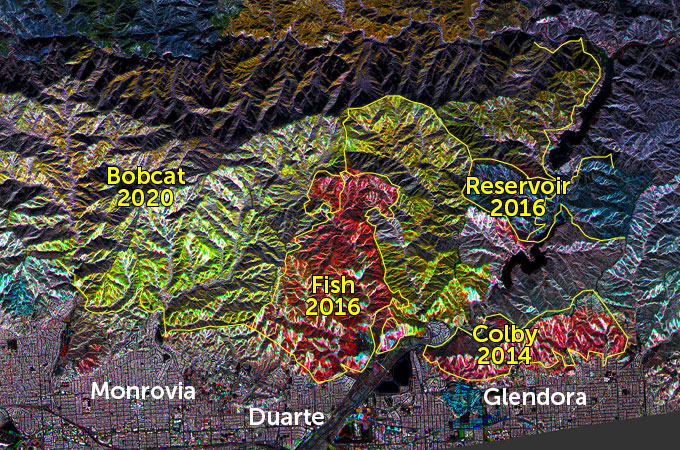Color-coded radar maps reveal a patchwork of California wildfire destruction
Research flights over the Los Angeles area tell a story of plant loss and regrowth

JPL researchers stacked vegetation maps from 2010 (red), 2017 (green) and 2020 (blue) atop each other, revealing how wildfires dramatically altered the landscape in Southern California.
Joshua Stevens/NASA Earth Observatory








